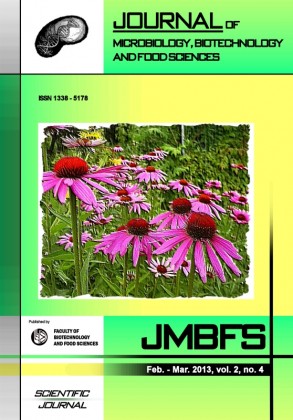ANTIBACTERIAL EFFECT OF GARLIC (ALLIUM SATIVUM) AND GINGER (ZINGIBER OFFICINALE) AGAINST STAPHYLOCOCCUS AUREUS, SALMONELLA TYPHI, ESCHERICHIA COLI AND BACILLUS CEREUS
Keywords:
antibacterial activity, Escherichia coli, Salmonella Typhi, Staphylococcus aureus, Bacillus cereus, garlic, gingerAbstract
Antibacterial activity of extracts of Allium sativum (garlic) and Zingiber officinale (ginger) has been evaluated against four different bacteria namely Escherichia coli, Salmonella Typhi, Staphylococcus aureus and Bacillus cereus. Two methods were used to determine the antimicrobial activity of garlic and ginger extracts namely disk diffusion method and agar well diffusion method. Garlic extract exhibited excellent antibacterial activity against all four test organisms while ginger extract showed antibacterial activity against Bacillus cereus and Staphylococcus aureus only. In addition, agar well diffusion method showed higher zone in inhibition when compared with the zone of inhibition produced by the spice of same concentration against the test microorganism by disk diffusion method.Antibiotic sensitivity of the four different bacteria was tested with commercially available antibiotics namely Ciprofloxacin; Oxytetracycline; Vancomycin; Streptomycin; Gentamicin; Tetracycline; Novobiocin; Amikacin and Penicillin G. Penicillin G produced the highest zone of inhibition of 40.00±0.00against Staphylococcus aureus and the lowest zone of inhibition of 0.00±0.00against Escherichia coli.
Downloads
Download data is not yet available.
Downloads
Published
2013-02-01
How to Cite
Chand, B. (2013). ANTIBACTERIAL EFFECT OF GARLIC (ALLIUM SATIVUM) AND GINGER (ZINGIBER OFFICINALE) AGAINST STAPHYLOCOCCUS AUREUS, SALMONELLA TYPHI, ESCHERICHIA COLI AND BACILLUS CEREUS. Journal of Microbiology, Biotechnology and Food Sciences, 2(4), 2481–2491. Retrieved from https://office2.jmbfs.org/index.php/JMBFS/article/view/7505
Issue
Section
Microbiology
License
Copyright (c) 2013 Bandna Chand

This work is licensed under a Creative Commons Attribution 4.0 International License.
All papers published in the Journal of Microbiology, Biotechnology and Food Sciences are published under a CC-BY licence (CC-BY 4.0). Published materials can be shared (copy and redistribute the material in any medium or format) and adapted (remix, transform, and build upon the material for any purpose, even commercially) with specifying the author(s).

